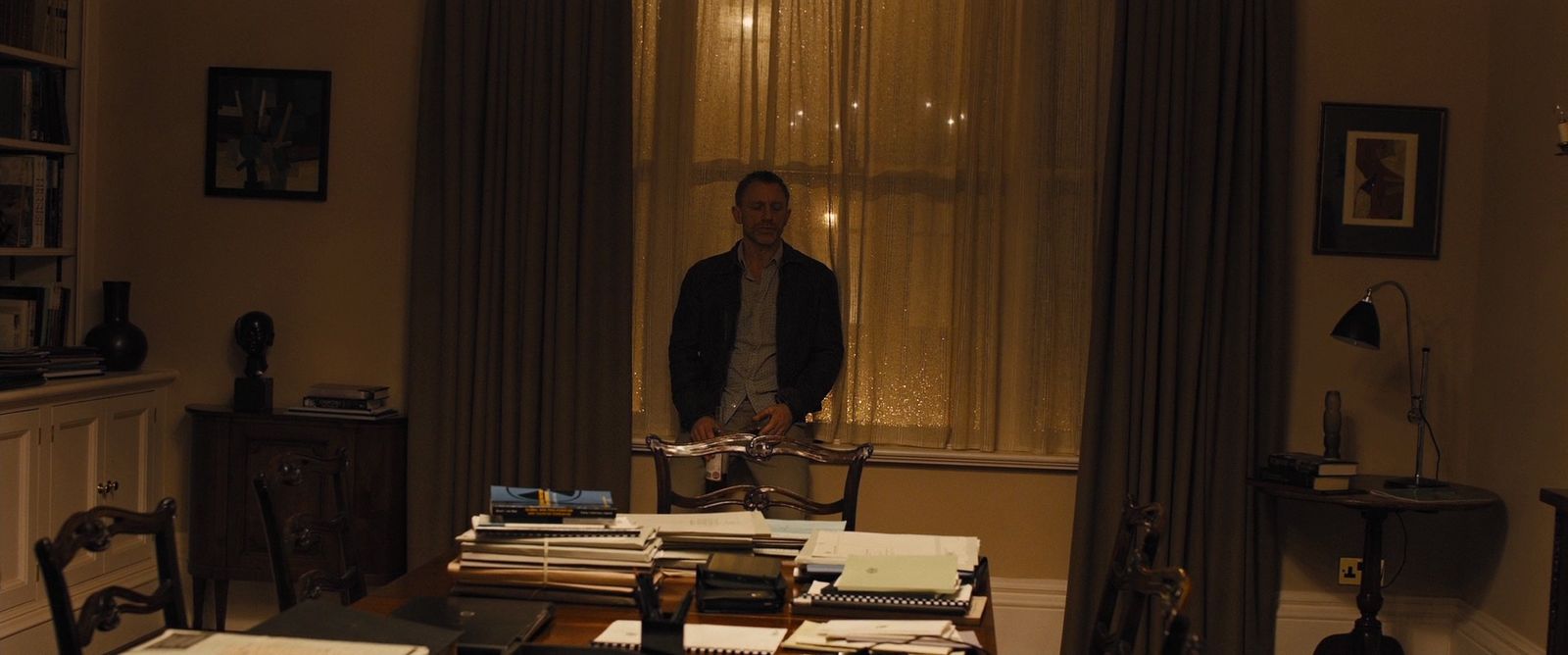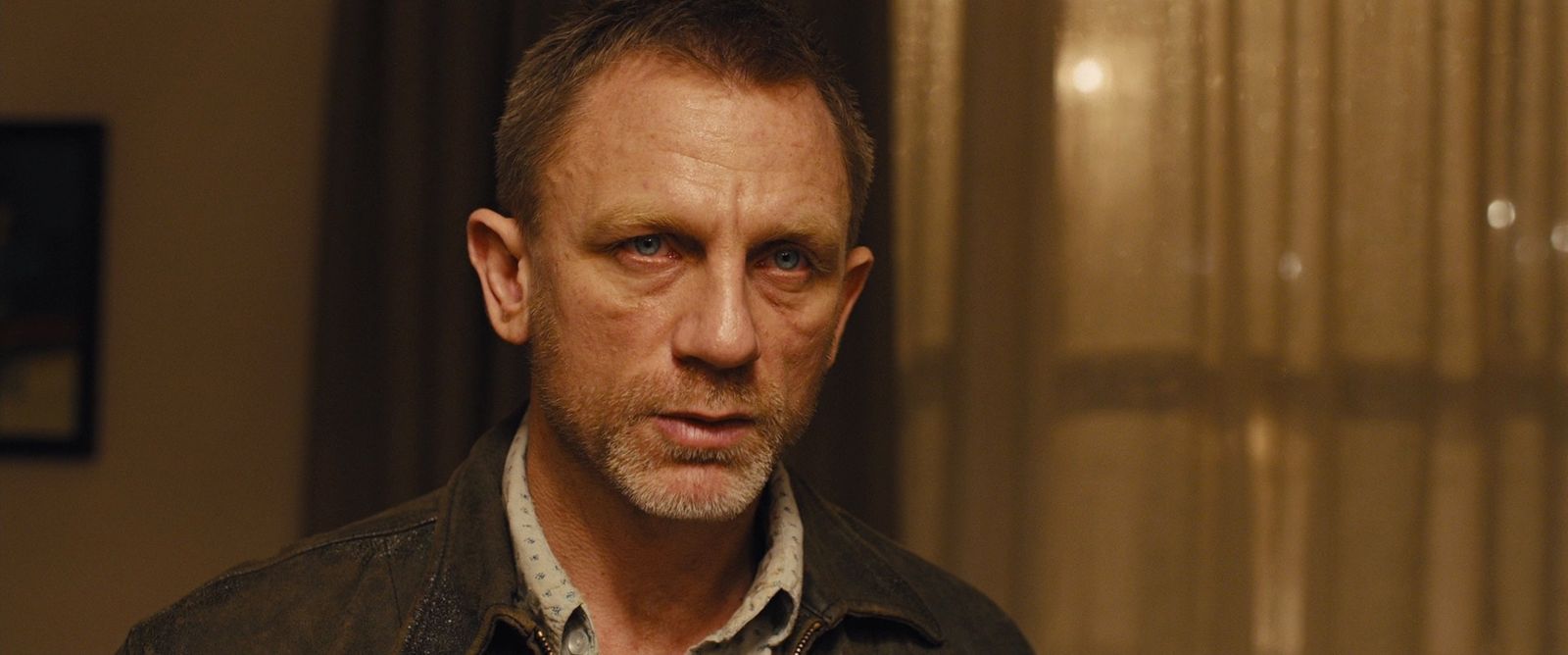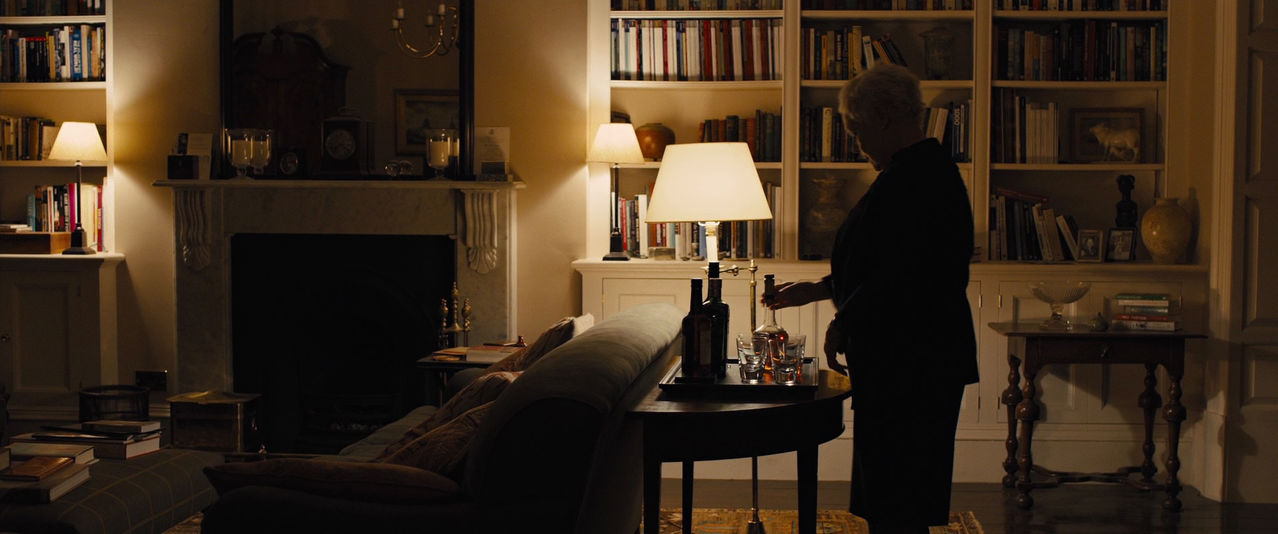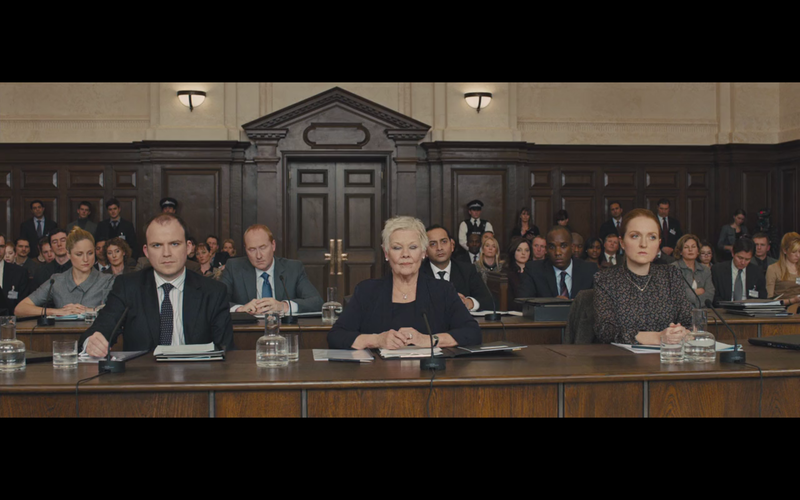Skyfall
Published by Misha Mazor on February 26th, 2016

The ceiling of the glass 'room' held 4' and 2' flourescent tubes. They were cool white and had a green spike in them to give the colour you see. I used two double 4' tubes outside the built in fixture for some closer work but the main source was the light you see in shot.
NIGHTINT




There were three small household bulbs hidden behind that drinks table, which just softened the effect of the light on the book shelves. There was no ceiling fill or overall fill. That's something I seldom do but there was a small bounce off camera to the left of frame.
DAYINT

That scene was entirely lit through the windows. I had something like 16 Maxi Brutes about 20' from the windows, a Light Grid cloth that was at about 10' from the windows and a 251 diffusion on the windows themselves. With the lights that far back from the windows the 'drop off' in exposure is reduced, as per the inverse square law, even though the theoretical source of the light is a mix between the distance of the lamps and the diffusion.